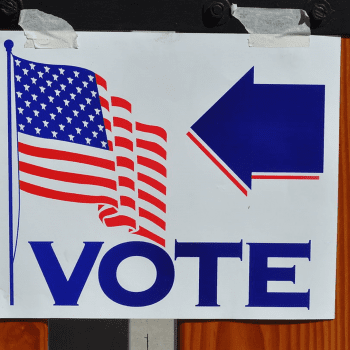At the very beginning of the Ghilarducci book I discussed yesterday, she says, “From the 1960s to the mid-1990s, about 75 percent of full-time American workers were covered by a pension” (p. 11), but, with the advent of the 401(k), they moved their employees to 401(k) plans to cut costs, leaving employees holding the bag.
After having written about Ghilarducci’s book yesterday, I thought it would be useful to give an alternate timeline of the demise of pension plans (or, strictly speaking, employer-sponsored Defined Benefit plans). This is written largely from memory, so please excuse any small errors in fact.
In Ghilarducci’s paradise of DB plan generosity in the 1960s, two things were missing: proper funding and proper accounting for those pensions.
Prior to 1974, employers were not required to set aside any money for pension plans, and there were no protections for employees in the case of bankruptcy, such as the Studebaker bankruptcy in 1963, which galvanized the public, and ultimately produced ERISA, the first pension funding law, which also established the PBGC. Good for employees, yes, because their pensions were safer, but costs for employers went up. Later funding legislation — the DRA, TEFRA, OBRA, and most recently the PPA — increased funding requirements, especially for union plans, which had previously been underfunded because benefits tended to be increased on a flat-rate basis with each new contract, and these increases were funded over a 30 year period. Plans were also increasingly limited in their ability to defer losses — if the stock market had a bad year, much more of the pension fund’s loss had to be made up for quickly.
Prior to 1987, employers were not required to account for the pension accruals their employees had earned during the year. Instead, they recorded contributions to the pension fund. In December 1985, FAS 87 was issued, which required that, effective 1987, employer change their accounting method to record benefit accruals, with an amortization of gains and losses. Subsequent statements, FAS 132 and 158, changed the disclosure methodology in an effort to make the state of the plan more transparent. And in 1990, similar accounting treatment was required for postretirement benefit plans, which had previously been recording their cash expense.
Oh, and there’s a third element missing from the 1960s “good old days”: pension plans were neither as generous nor as prevalent as Ghilarducci makes them out to be. To be sure, a larger portion of the population was covered than today, but only employees at large employers had pensions in the first place; smaller firms didn’t. And at those large firms, there was no requirement that pensions vest at any given time, so employees could work for multiple decades and lose their right to a pension by leaving their job. ERISA introduced a 10-year vesting, now down to 3 years for DC (defined contribution) plans and 5 years for DB (defined benefit or pension) plans. She also cites 2% of pay per year of service as a typical accrual rate, but that’s very high: I think 1.5% would have been more typical, and would have included a partial offset for Social Security benefits.
What’s more, in those traditional pension plans, even after vesting implementation, benefits were typically based on final pay. For a full-career employee, this was a great deal: it was an easy-to-understand formula, of x% of pay times years of service times final (usually averaged) pay. For a job-hopper, this was not so great: if you managed to stay long enough to be vested, the benefit could be quite small, since it was based on your pay at the time you left the company, even if that was many decades prior to retirement. And in terms of benefit accrual, a notionally even accrual over one’s working lifetime was actually tilted in favor of older workers, whose benefit accrual in actuarial terms was much higher because of the time value of money.
This meant that there were multiple reasons for the near-disappearance of pension plans beginning in the late 1990s:
Yes, employers aimed to cut costs — but not because they’re ogres, but because their costs had risen and become less hidden, due to stricter funding legislation, more transparent accounting, lower discount rates, increases in longevity, and so on.
Employers also became much more concerned with risk, or rather, with ensuring that the risks they took were a part of their core business and were rewarded. Maintaining a large pension fund, subject to the vagarities of the markets, became much less acceptable, especially after the recent market crashes, and after they could no longer easily defer losses.
But employers also perceived of DC plans as more attractive to employees. After all, a young employee didn’t necessarily see him or herself as staying at the company long enough to benefit from a traditional pension. The prospect of money flowing into an account that was tangibly theirs was more attractive, or was thought to be so by the company’s decision-makers. And the 401(k) — well, that wasn’t even a part of the equation when this transition began to happen: younger companies offered other forms of defined contribution plans, such as Money Purchase Pension Plans or profit-sharing plans, and companies transitioned from traditional DB plans to Cash Balance pension plans, in which DC-like sums of money are accrued as notional accounts within a pension plan, to provide steady accruals, rather than a large jump in benefits close to retirement.
To be sure, Ellen Schultz caused quite an uproar with a series of articles at the Wall Street Journal in the late 1990s, when she wrote a series of articles, such as “‘Cash Balance’ Saves Millions, Hides Pitfalls From Workers,” from December 1998, in which she documented that, in order to provide better benefits for younger job-hoppers, accruals for older workers dropped or even vanished. She also quoted employers (in a “caught on tape” fashion, as she attended a conference where they spoke freely) using a transition to cash blance as a means of “hiding” benefit cuts (this is from memory, sorry). But that was never the whole picture.
Of course, in the here and now, very few employees have traditional pension plans; even among large private employers, prevalence has dropped (from memory) from something like 80% to maybe 25%. And as a consequence, employees do, indeed, bear all the investment and longevity risk, and this is a problem that needs attention.
What’s more, employers have moved from “traditional DC plans” in which employees received benefits no matter what, to 401(k)s in which they only receive an employer contribution if the employee contributes — for reasons that, generously, could be said to be wanting to motivate employees to save (and also include autoenrollment and auto-escalation), or, cynically, are a cost-saving measure, though employers these days have a fixed budget for retirement spending and tweak provisions within that budget. And, incidentally, there are federal regulations that prevent favoring high-earning employees; even within 401(k) plans, employers can’t just shrug off high participation by the high earners but have to ensure that a fair proportion of the benefit goes to the average earners.
So, by all means, let’s remind everyone that our fathers had pension benefits that we won’t have. But let’s get the story straight.
Image: George Bush signs the Pension Protection Act of 2006.
https://commons.wikimedia.org/wiki/File%3APresident_George_W._Bush_signs_the_Pension_Protection_Act.jpg; By White House photo by Kimberlee Hewitt [Public domain], via Wikimedia Commons


![https://commons.wikimedia.org/wiki/File%3APresident_George_W._Bush_signs_the_Pension_Protection_Act.jpg; By White House photo by Kimberlee Hewitt [Public domain], via Wikimedia Commons](https://wp-media.patheos.com/blogs/sites/533/2016/04/President_George_W._Bush_signs_the_Pension_Protection_Act.jpg)











